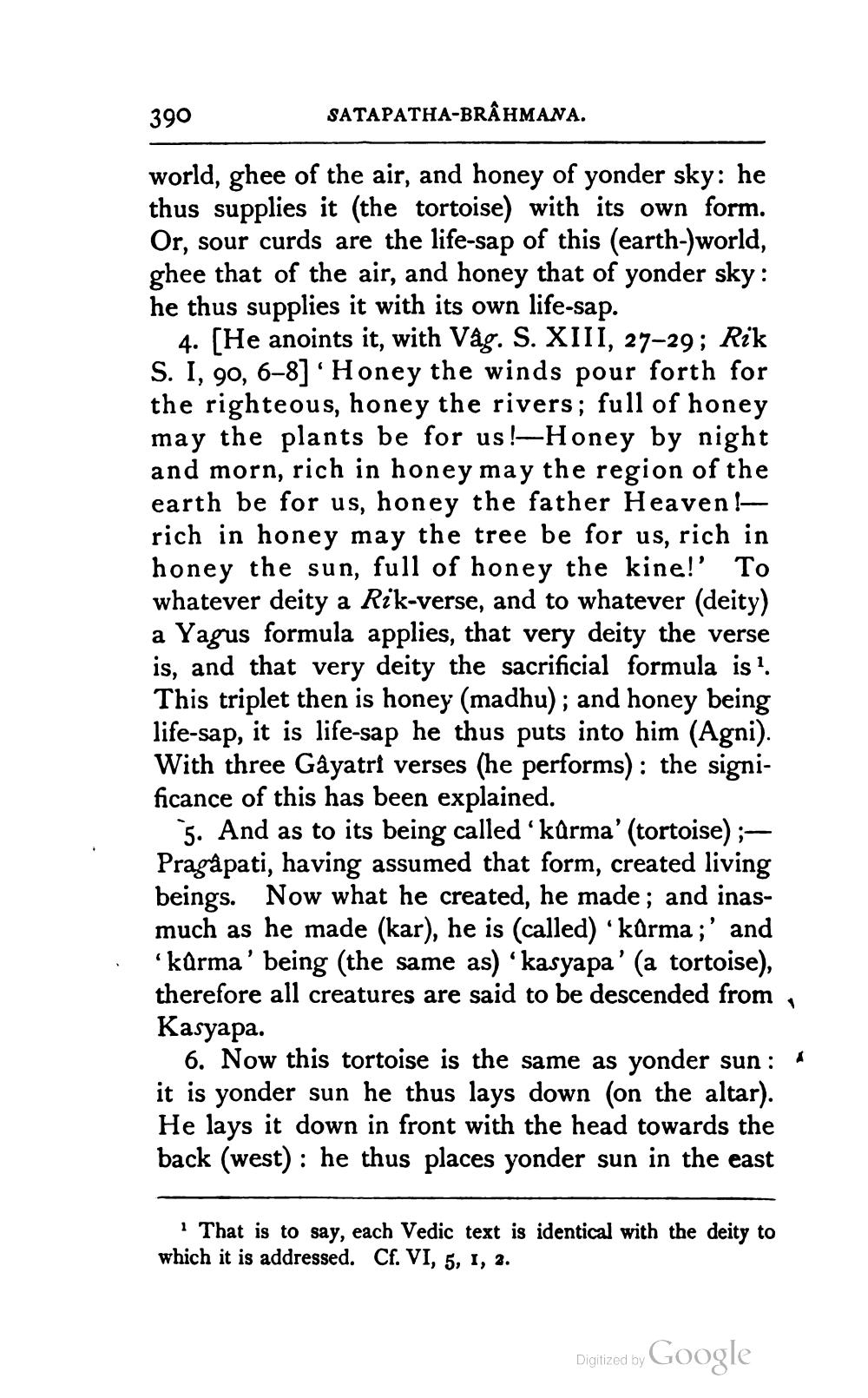________________
390
SATAPATHA-BRAHMANA.
world, ghee of the air, and honey of yonder sky: he thus supplies it (the tortoise) with its own form. Or, sour curds are the life-sap of this (earth-)world, ghee that of the air, and honey that of yonder sky: he thus supplies it with its own life-sap.
6
4. [He anoints it, with Vâg. S. XIII, 27-29; Rik S. I, 90, 6-8] Honey the winds pour forth for the righteous, honey the rivers; full of honey may the plants be for us!-Honey by night and morn, rich in honey may the region of the earth be for us, honey the father Heaven!rich in honey may the tree be for us, rich in honey the sun, full of honey the kine!' To whatever deity a Rik-verse, and to whatever (deity) a Yagus formula applies, that very deity the verse is, and that very deity the sacrificial formula is1. This triplet then is honey (madhu); and honey being life-sap, it is life-sap he thus puts into him (Agni). With three Gayatri verses (he performs): the significance of this has been explained.
5. And as to its being called 'kûrma' (tortoise);— Pragâpati, having assumed that form, created living beings. Now what he created, he made; and inasmuch as he made (kar), he is (called) 'kûrma;' and 'kurma' being (the same as) 'kasyapa' (a tortoise), therefore all creatures are said to be descended from Kasyapa.
6. Now this tortoise is the same as yonder sun: it is yonder sun he thus lays down (on the altar). He lays it down in front with the head towards the back (west): he thus places yonder sun in the east
That is to say, each Vedic text is identical with the deity to which it is addressed. Cf. VI, 5, 1, 2.
Digitized by
Google
1
A




